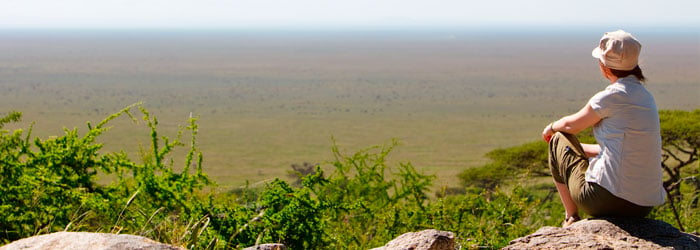Designing a memorable safari experience around your interests
When most people imagine an East African safari, they picture an adventure to witness amazing wildlife like elephants, lions, and zebras. Though this is an accurate depiction, a safari can be so much more than strictly a wildlife expedition.
East African countries like Kenya and Tanzania offer activities and excursions to suit a wide range of interests and preferences. Ultimately, your safari experience can be multifaceted and tailored to the interests of you or your organization – be they nature photography, conservation, birding, or education. There are many options for game parks that you’ll want to research and consult with experts who have been there and can speak firsthand.
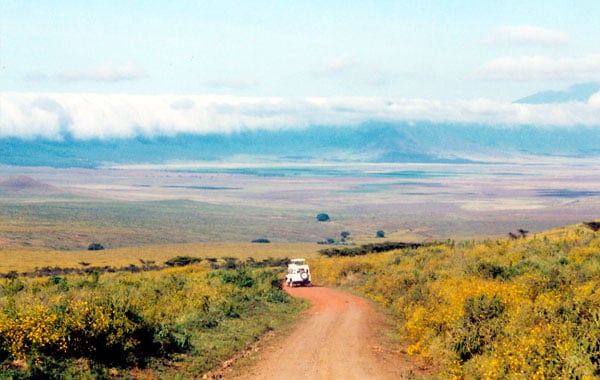
Consider less-visited parks to enhance your experiences
Many safari routes in Tanzania follow a traditional path between Arusha, Tarangire, , Lake Manyara, Ngorongoro Crater, and the Serengeti. While this is a classic route for good reason, you may want to consider lesser-known destinations. In addition to Ngorongoro Crater, for instance, you may be interested in a visit to nearby Empakaai Crater, which allows for visitors to descend into the caldera on foot through rainforest, with a park ranger, and have a picnic lunch at the salt lake with flamingos, in contrast to Ngorongoro’s vehicle drive.
In Arusha, there’s also Lake Duluti, a crater lake surrounded by forest where you can hike or even go canoeing. This hidden gem is a favorite of Holbrook Specialty Travel Consultant Sandy Schmidt, who’s been planning East Africa itineraries since 1992. “There are not a lot of opportunities to do that,” Schmidt says of the canoeing experience. “I often recommend that for the first day of an itinerary, because it’s a great way for travelers to relax and enjoy their surroundings after the long flight.”
Nature photographers might want to consider more “off-the-beaten-track” safari sites to minimize crowds and time restrictions. Whichever you choose, it’s essential to know their rules for operating hours (maybe you’d like to go on a night drive) and off-road access (in case you want to get closer to the animals). You’ll also want to a safari vehicle that can accommodate your equipment – bearing in mind that many photography safaris make room for equipment by seating two passengers per vehicle instead of four, thereby increasing the cost.
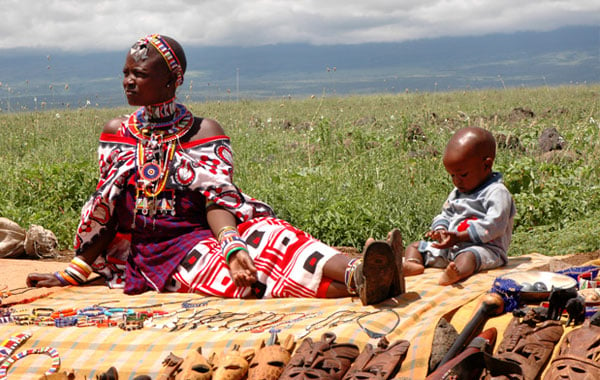
Including cultural interaction, past and present
East Africa offers many opportunities to interact with local communities and their diverse range of individual cultures. Semi-nomadic Maasai tribes in both Kenya and Tanzania welcome visitors to their villages to observe their traditions, learn about their beliefs, and experience their pastoral way of life. Near Lake Manyara National Park, the village Mto wa Mbu offers a chance to experience rural life, and you can even enjoy lunch with – and prepared by – a local family. You can also chat with the Hadzabe Bushmen, one of the few hunter-gatherer societies remaining in Africa. However, you’ll need an interpreter, as the Hadzabe speak a unique language composed of clicks.
If your safari takes you to Arusha National Park, you can incorporate a stop at Shanga Beads, an inspiring local community project that employs people with disabilities to create glass, woven, beaded, and paper handicrafts using recycled materials wherever possible. A visit to Shanga can include a workshop tour, Q&A discussion, sign language lesson, and even a chance to try your hand at beading or glassblowing. And of course, the Shanga shop is a must.
To learn about local cultures in the distant past, there’s also Olduvai Gorge, the “Cradle of Civilization,” where Louis and Mary Leakey unearthed evidence of the earliest humans living there nearly 2 million years ago – as well as the stone tools they developed, signifying the evolutionary transition from ape to man. You can learn more about these discoveries and their impact at the onsite museum, which is located en route between Ngorongoro Crater and Serengeti National Park, making it a convenient stop.
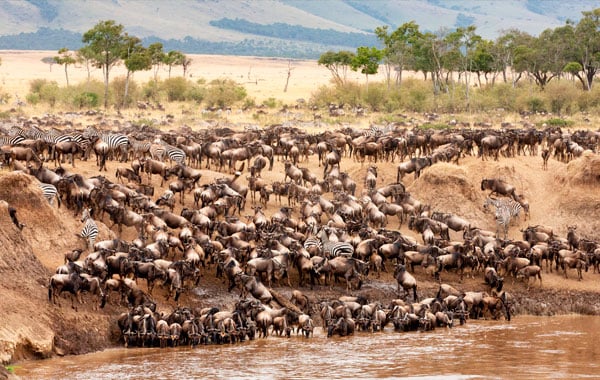
Best time to see The Great Migration
In Tanzania, just along its border with Kenya, the world-famous Serengeti National Park contains the greatest concentration of game animals in the world, and is home to the annual Great Migration, a stunning spectacle where millions of wildebeest, zebra, and gazelle follow food resources on a 500-mile journey between Tanzania and Kenya.
If you’re interested in witnessing The Great Migration, seasonality is a factor. Though the migration is an all-year cycle, it’s best to go from June until October, during the dry season. July is when the big event happens: the wildebeest and zebra cross the Mara River in the Northern Serengeti.
If you want to a more private experience, you can see the same herds crossing the Grumeti River, further south. “Since most people go to the Mara River, the Grumeti River offers a great opportunity to see the Great Migration river crossing with fewer crowds,” says Schmidt.
Many itineraries also incorporate the ability to move where the migration moves – through accommodation in “mobile tented camps,” semi-permanent lodging strategically set up for maximum wildlife access. This kind of accommodation can range in its level of luxury, so be sure to research the amenities and facilities offered.
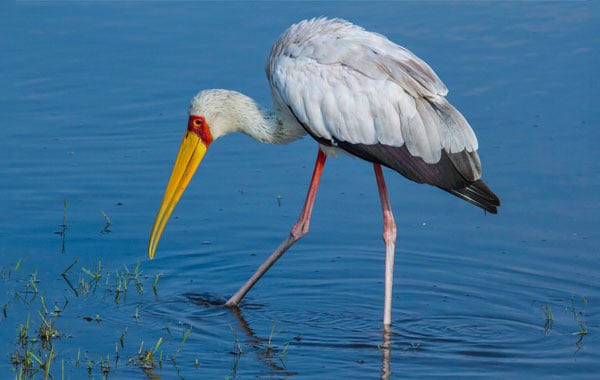
photo by Eric Lindberg
Birding in East Africa
Though often overshadowed by its famous mammal populations, East Africa also boasts an impressive bird list, with 1,500 species recorded. Roughly 1,000-1,100 of these species can be seen across Kenya and Tanzania alone.
In Tanzania, 21 species are endemic to the region. Lake Manyara National Park is particularly good for birding; many of the park’s 400 species can be seen year-round. Arusha National Park hosts a similar number of species. Serengeti National Park totals about 500 bird species, including the Lilac-breasted Roller, Kori Bustard, and Secretarybird.
Kenya has eight endemic species, with a variety of birding sites across different climates and altitudes. The West African rainforest border at Kakamega National Forest offers a completely different ecosystem than the rest of Kenya, and a chance to see the globally threatened Chapin’s Flycatcher and Turner’s Eremomela. Lake Victoria, the headwater of the Nile River and the second largest freshwater lake in the world, is an important habitat for threatened species dependent on its papyrus swamp marshland.
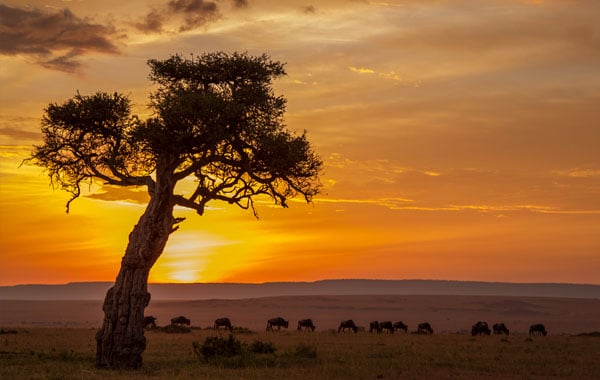
photo by Eric Lindberg
A note on budget and planning logistics
The safari of your dreams does not have to deplete your life’s savings. There are ways to economize, by staying at less-expensive lodges and altering routes. But airfare alone costs between $1500-$2500, depending on your location and season. Do your homework by comparing costs between different safari providers, but at the end of the day it’s important to recognize that Africa is a higher budget destination.
Finally, many travelers add an extension to their safari. For active adventurers, Kilimanjaro is a popular option; for relaxation and unwinding, the Tanzanian coast and Zanzibar fit the bill. If you’re concerned that transfers might take too long in a region as large as East Africa, Schmidt suggests internal flights. “They’re really good options because they cut down on a lot of driving time, plus they give you a unique and beautiful view of the country.”


